

Lawn care in spring - 7 tips to get your green in shape
So that you can really enjoy your lawn and enjoy it for a long time, it needs the right care. So here are a few tips on how to keep your lawn looking good for a long time.
Turf is not just a green space that looks great and invites you to spend time outdoors. It is a recreational space for people and animals, a playground for the family, a meadow for playing football and much more. A beautifully manicured lawn is also the ideal place to celebrate garden parties or enjoy a glass of red wine or a beer with friends on a warm summer evening and savour the evening with a tender piece of meat.
#1 Clearing the lawn of leaves
First and foremost, it is important to clear the lawn of any remaining leaves, branches and twigs and other organic material in spring. The best way to do this is to get to grips with the dead material on a mild spring day, armed with a garden rake and rubbish bin.
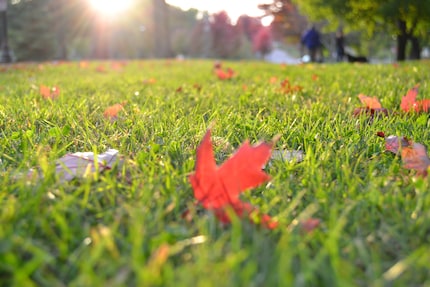
It is important to remove the collected material and take it to the green waste collection centre. Of course, it is even better to put the material in the compost. This way, it remains in nature's cycle and can be returned to the garden as valuable compost at a later date.
#2 Take a soil sample if necessary
If you are not sure how your lawn is doing, a professional soil analysis is recommended. This can be done as early as January/February and March. The soil analysis test can be obtained from garden centres, DIY and hobby stores and specialised companies.
Many factors influence the quality of your lawn. As the soil plays a central role in a beautiful lawn, its importance is often underestimated. For a beautiful lawn, it is important that all the necessary nutrients are present in the soil.
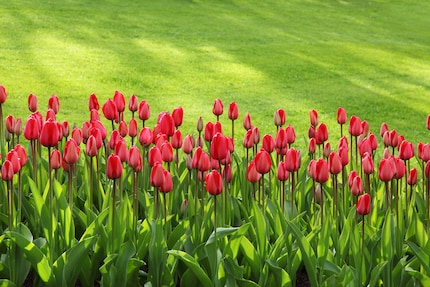
#3 Remove moss from shady areas
Is your lawn more moss than grass? If so, the following factors are responsible:
- poor nutrient supply
- lawn thatch not removed
- too shady a location
- too deep cut, especially in shady locations or sites
- too moist location or waterlogging
Regular fertilisation, good soil aeration (scarifying) and a slightly higher cut (cutting height 5 to 7 cm) can already considerably reduce the occurrence of moss
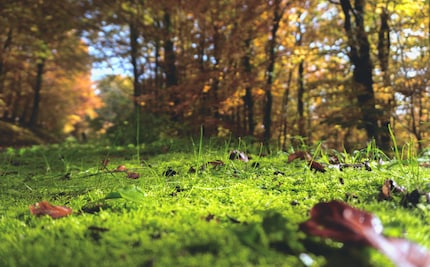
If necessary, a selective herbicide can be sprayed after scarifying. However, thorough scarifying is usually sufficient so that treatment with a chemical spray is not necessary.
The ideal time for scarifying is in March and April. It doesn't matter whether the lawn is already showing signs of growth or not. If the scarifying step is bypassed, success will not materialise. Sooner or later, the moss will take over again and all the work will have been in vain. So it's worth taking proper care of your lawn!
If you don't want to buy a scarifier. Scarifiers can be hired by the day from many DIY and hobby stores.
#4 Scarifying to give the lawn air again
Why should I scarify my lawn?
Dethatching helps to remove the old lawn thatch and gives the lawn grasses room to breathe again. With the right fertilisation and the right reseeding of lawn seed, a beautiful closed lawn carpet is created in the same year. In addition, the soil is aerated and root growth is stimulated. This in turn ensures that the grasses develop fully and vigorously and remain healthy.
Procedure for scarifying:
- Mow the lawn as short as possible. It is best to use a lawn mower with a grass catcher so that the clippings are removed.
- Use a scarifier to loosen the moss from the lawn and scarify the soil. Ensure that scarifying is carried out against the direction of mowing. If the lawn is heavily infested with moss, also scarify in the longitudinal direction. Important: Scarify thoroughly so that the lawn thatch is completely removed. This is the only way to ensure good germination and development conditions for the new lawn seeds.
- After scarifying, rake up the thatch and moss using a rake with narrow tines. Smaller quantities can also be "collected" using a lawn mower with a grass collector.
If the weather is good, scarifying can be carried out from mid-March. The best results are achieved in spring (March - May) and autumn (September), as the green area regenerates most quickly. An important prerequisite for scarifying to be a complete success: The soil must not be too wet but also not too dry!
If the ground is too wet (long periods of rain), the entire sward may be pulled out during scarifying. This in turn leads to unsightly gaps, which are of course undesirable.
#5 Lawn reseeding made easy
Why is it so important to reseed the lawn after scarifying?
After scarifying and removing the moss, gaps are created in the lawn carpet. To prevent weed seeds from germinating here, it is important to close the gaps in the lawn with reseeding.
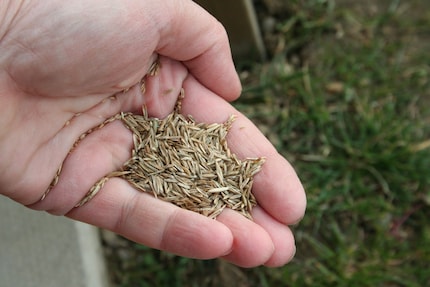
In order to achieve rapid regeneration of the lawn, it is advisable to sow new grass. There are now many products that are very easy to sow and very promising in terms of germination thanks to a special coating on the seed. Of course, you can also buy conventional lawn seed, sow it and cover it with a little sand.
The ideal time for this is in April and May. The soil temperature should be at least 10 degrees Celsius or more so that the seed can germinate well. Make sure to keep the lawn regularly moist during the initial period. For larger new seedings, it is advisable to mark out the lawn area. This allows the lawn seed to germinate undisturbed.
#6 Fertilise correctly - but how?
Why is it so important to fertilise the lawn regularly?
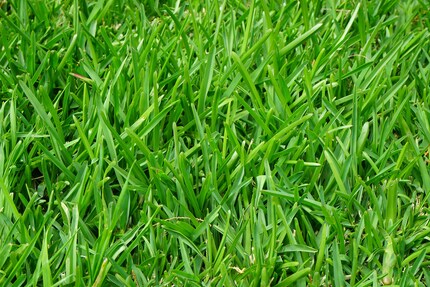
In order for the lawn to thrive optimally and to ensure a balanced supply of nutrients, the lawn ideally needs two to three fertiliser applications per year. These are in spring, at the end of summer and in autumn (preparation for winter)
The first fertilisation can be applied from mid-March to May, depending on the weather. It is best to spread a commercial fertiliser evenly over the lawn using a spreader. If the weather is warm and dry, water the lawn well before and after to avoid burning.
If you don't want to fertilise the lawn three times a year, you can of course also use a slow-release fertiliser, which supplies the lawn with nutrients from spring to autumn.
#7 The first lawn cut - or wake up Sleeping Beauty!
The first lawn cut takes place when the grass has grown to a height of 8 - 10 cm. To do this, the lawn mower is woken up from its winter sleep and put into operation.
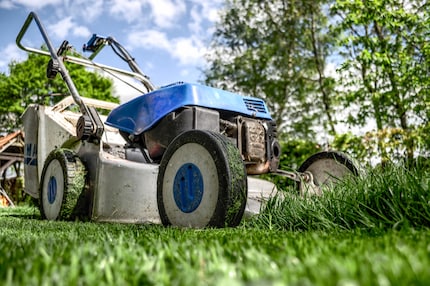
If the lawn mower needs servicing, be sure to do this beforehand. Now would be the ideal time to do so.
Now I wish you lots of fun and success with your lawn care!
With these products, you can get your lawn back on track:
Here you can find the entire garden range.
You might also be interested in:
I discovered my love for gardening very early on and later turned my passion into my profession. For a few years now, I’ve been regularly writing blog posts and publishing articles in the HomeGardening section of myPfadFinder.com. This is where I give readers tips and tricks on gardens and balconies and present my latest gardening videos.
Find out more about me here: <a href="http://www.andreas-homegardening.com/" target="_blank">www.andreas-homegardening.com</a>
Interesting facts about products, behind-the-scenes looks at manufacturers and deep-dives on interesting people.
Show all






